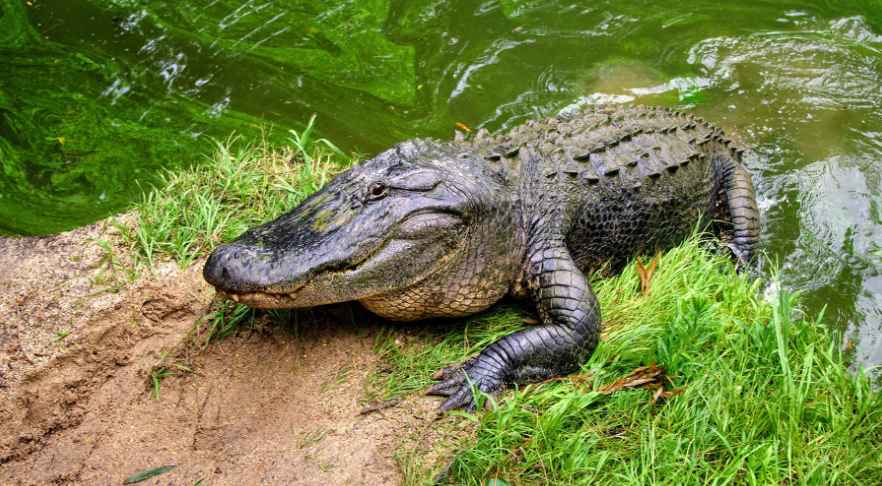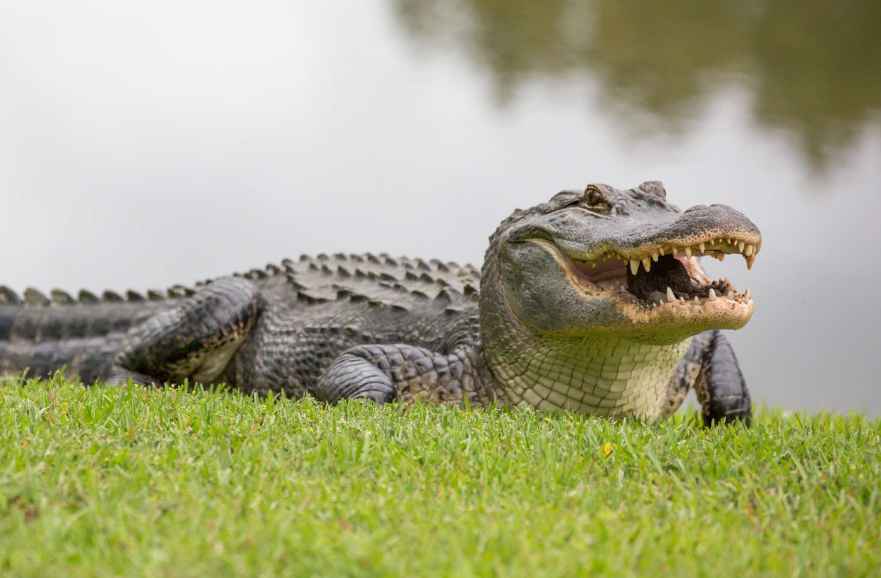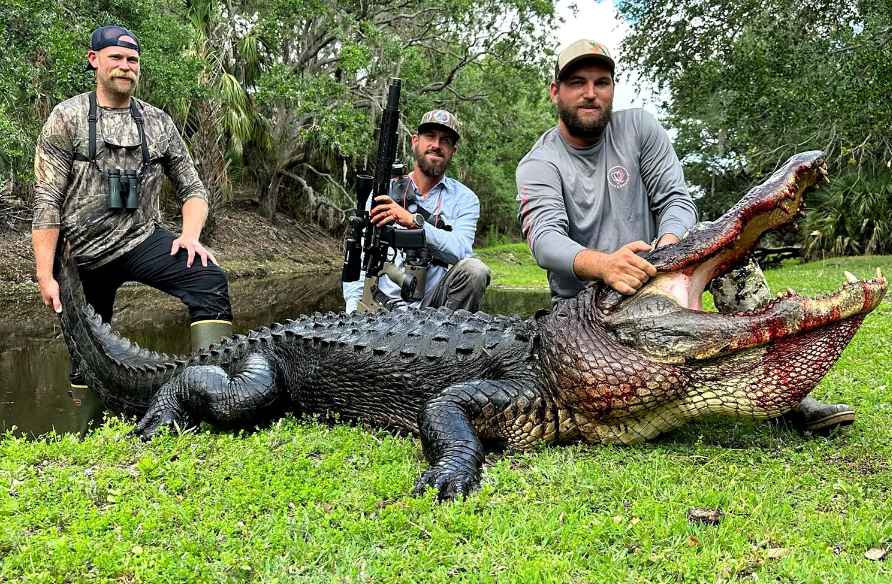Top 5 Most Alligator-Infested Lakes in Florida
Florida’s swamps and lakes are teeming with life, and alligators are a fascinating part of the ecosystem. But for some, knowing where these prehistoric predators reside is essential.
So, buckle up, nature enthusiasts, as I explore the top 5 most alligator-infested lakes in Florida!
Role of Alligators in the Ecosystem

Before we plunge into the depths of these lakes, let’s take a moment to appreciate the starring characters of our adventure: the alligators.
These colossal reptiles are not merely the stuff of nightmares; they are the unsung heroes of Florida’s ecosystem. Picture them as nature’s custodians, keeping the delicate balance in check.
By feasting on pesky invasive species and maintaining a healthy prey population, alligators emerge as the unsung guardians of Florida’s wetlands.
Top 5 Most Alligator-Infested Lakes in Florida

Here are the top 5 most alligator-infested lakes in Florida, according to various sources:
1. Lake Okeechobee
This is the largest lake in Florida and is estimated to be home to over 30,000 alligators. The lake is a vital part of the state’s ecosystem and provides habitat for a variety of fish, birds, and other wildlife.
2. Lake Jesup
Located in Seminole County, Lake Jesup is estimated to have the highest concentration of alligators in the United States, with an estimated population of 13,000.
The lake is a popular spot for fishing, boating, and birdwatching, but visitors should be aware of the alligators and take precautions to avoid encounters.
3. Lake George
Located in Volusia County, Lake George is home to an estimated 6,000 alligators. The lake is a popular destination for airboat tours, which offer a safe way to see the alligators in their natural habitat.
4. Orange Lake
Located in Alachua County, Orange Lake is home to an estimated 2,732 alligators.
The lake is a popular spot for fishing, boating, and swimming, but visitors should be aware of the alligators and take precautions to avoid encounters.
5. Lake Kissimmee
Located in Osceola County, Lake Kissimmee is home to an estimated 2,065 alligators. The lake is part of the Florida Everglades and is a popular spot for fishing, boating, and airboat tours.
It is important to remember that alligators are wild animals and should be treated with respect.
Other Post: Britton Hill The Highest Mountain in Florida
Seasonal Patterns in Alligator Activity
Understanding the seasonal patterns of alligator activity is crucial for those venturing into these gator-rich environments.
While warmer months see increased basking and mating behaviors, cooler temperatures drive alligators to seek warmer waters.
Being aware of these patterns ensures a safer and more enriching experience for both wildlife and human enthusiasts.
Legal Framework and Alligator Protection Laws

Florida recognizes the importance of preserving its unique wildlife, including alligators. Strict regulations govern alligator hunting and management to ensure sustainable practices.
Familiarizing yourself with these laws before exploring these lakes is not just a legal requirement but a commitment to the conservation of these magnificent creatures.
Interview with Alligator Experts
Dr. Sarah Davis, Wildlife Biologist: “Alligators are intelligent creatures, and responsible observation can be a valuable learning experience. Always prioritize safety and respect their habitat.”
Mark Johnson, Park Ranger: “It’s important to remember that these are wild animals. Maintain a safe distance, never feed them, and report any concerns to park authorities.”
See Also: How to Get My Florida Boating Licens?
Conclusion
In the heart of Florida’s picturesque landscapes lie the top 5 most alligator-infested lakes, each telling a unique story of coexistence between man and nature.
Exploring these waters unveils the captivating world of alligators, showcasing their significance in the intricate web of life.
As we embrace the thrill of encountering these majestic creatures, let’s also commit to preserving their habitats for generations to come.






